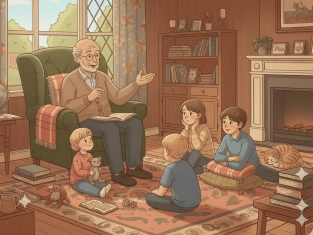-ed/-ing adjectives – Adjectives from verbs
Table of Contents
Exercises
Explanation
1. What Are -ed and -ing Adjectives?
Both types originate from verbs, but they function differently in a sentence.
-ed adjectives → describe a person’s feelings or emotional reaction
-
I’m interested in astronomy.
-
He felt surprised by the announcement.
-ing adjectives → describe the thing, activity, or situation that creates the feeling
-
The lecture was interesting.
-
The announcement was surprising.
2. The Core Difference
Think of the difference like this:
|
Ending |
What It Describes |
Question Answered |
Example |
|
-ed |
a person’s emotion |
How do you feel? |
I’m worried. |
|
-ing |
the cause of the feeling |
What is it like? |
The exam was worrying. |
3. How to Use -ed and -ing Adjectives
A. Use -ed to describe temporary feelings
These adjectives express how someone feels at a particular moment.
-
She is confused about the instructions.
-
We were delighted with the results.
-
I’m frustrated because my laptop isn’t working.
B. Use -ing to describe the cause of the feeling
These adjectives explain what creates an emotional reaction.
-
The instructions are confusing.
-
The results were delightful.
-
The broken laptop is frustrating.
C. Many verbs create both forms
Here are more useful pairs:
|
Verb |
-ed Adjective |
-ing Adjective |
|
fascinate |
fascinated |
fascinating |
|
disappoint |
disappointed |
disappointing |
|
terrify |
terrified |
terrifying |
|
bore |
bored |
boring |
|
inspire |
inspired |
inspiring |
4. Common Mistakes to Avoid
Mistake 1: Using -ing to describe your own feelings
Incorrect: I’m worrying about the trip.
Correct: I’m worried about the trip.
Mistake 2: Using -ed to describe things
Incorrect: The presentation was tired.
Correct: The presentation was tiring.
Mistake 3: Choosing the wrong emotion
Incorrect: I felt exciting during the event.
Correct: I felt excited during the event.
5. Using -ed and -ing Adjectives in Real-Life Communication
Talking about your feelings
-
I’m exhausted after the long day.
-
She was embarrassed when she forgot his name.
Describing the cause of the feeling
-
The long day was exhausting.
-
The situation was embarrassing.
Using both forms together
-
I was amused by his amusing story.
-
They were shocked by the shocking news report.
6. Quick Memory Tips
-ed = emotions
Use it for how a person feels.
-
I’m confused.
-
She’s excited.
-
They’re disappointed.
-ing = the cause of the feeling
Use it for things, events, activities, or situations.
-
The book is confusing.
-
The trip was exciting.
-
The match was disappointing.
Objects cannot feel
So they never take -ed.
Incorrect: The film is bored.
Correct: The film is boring.

